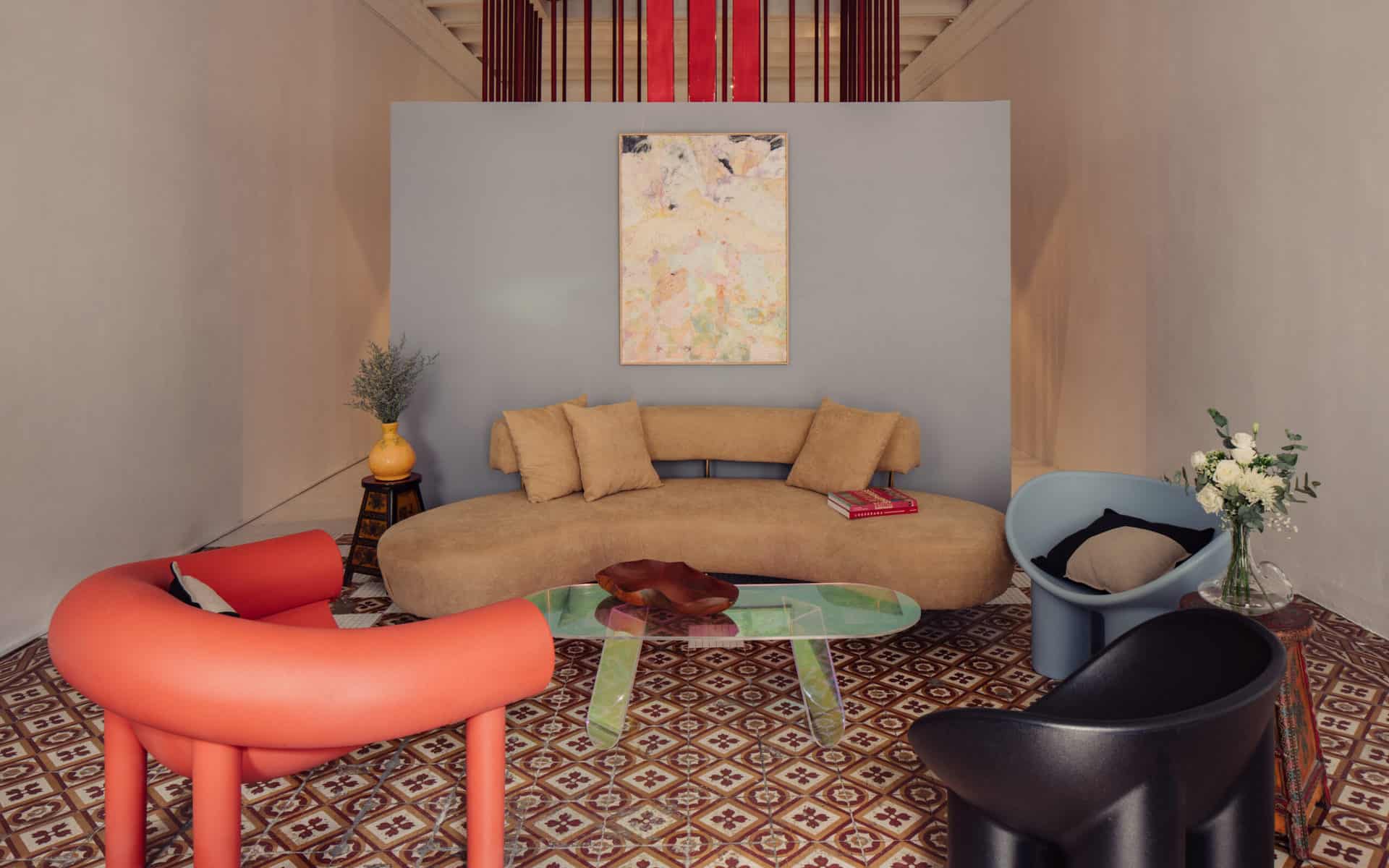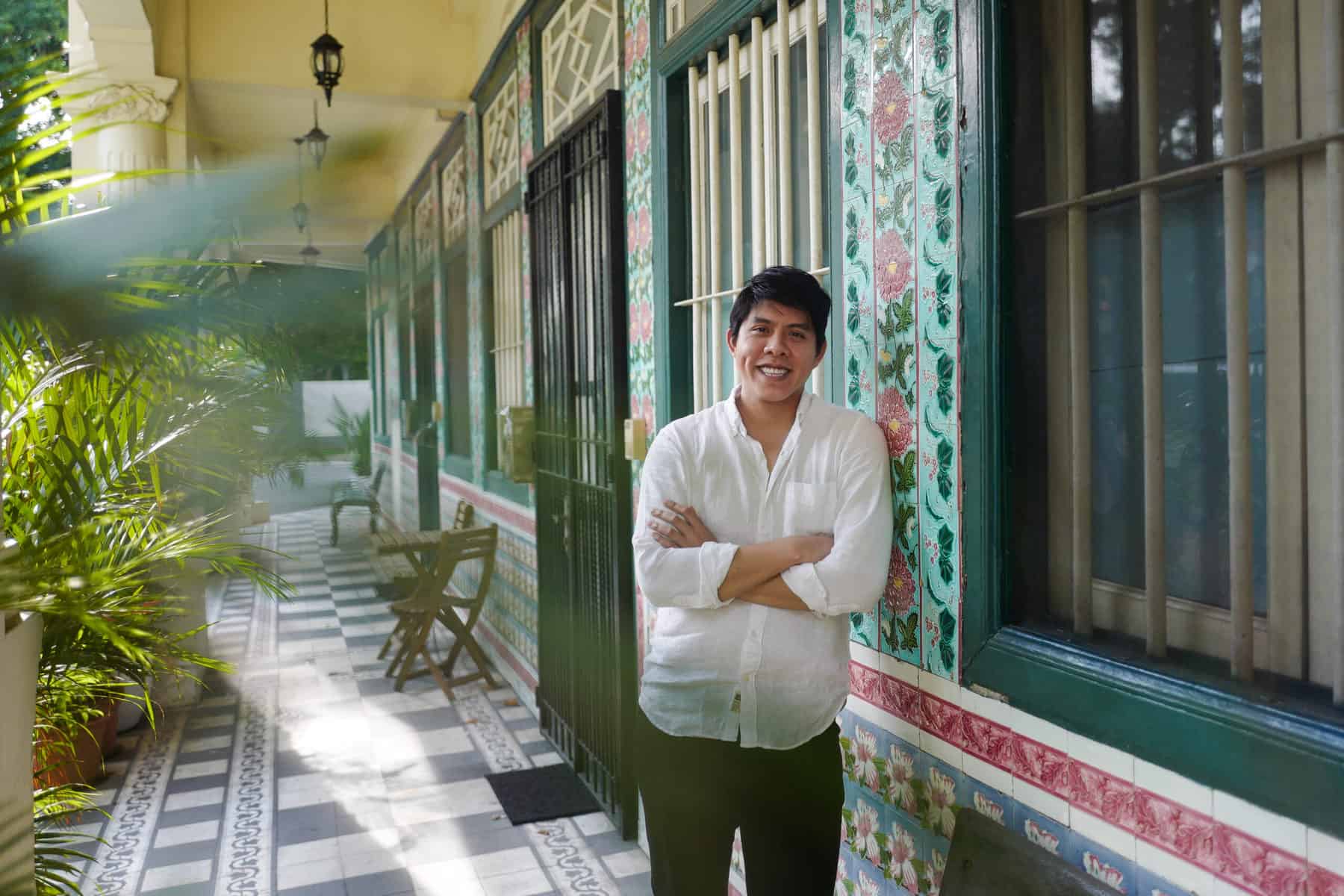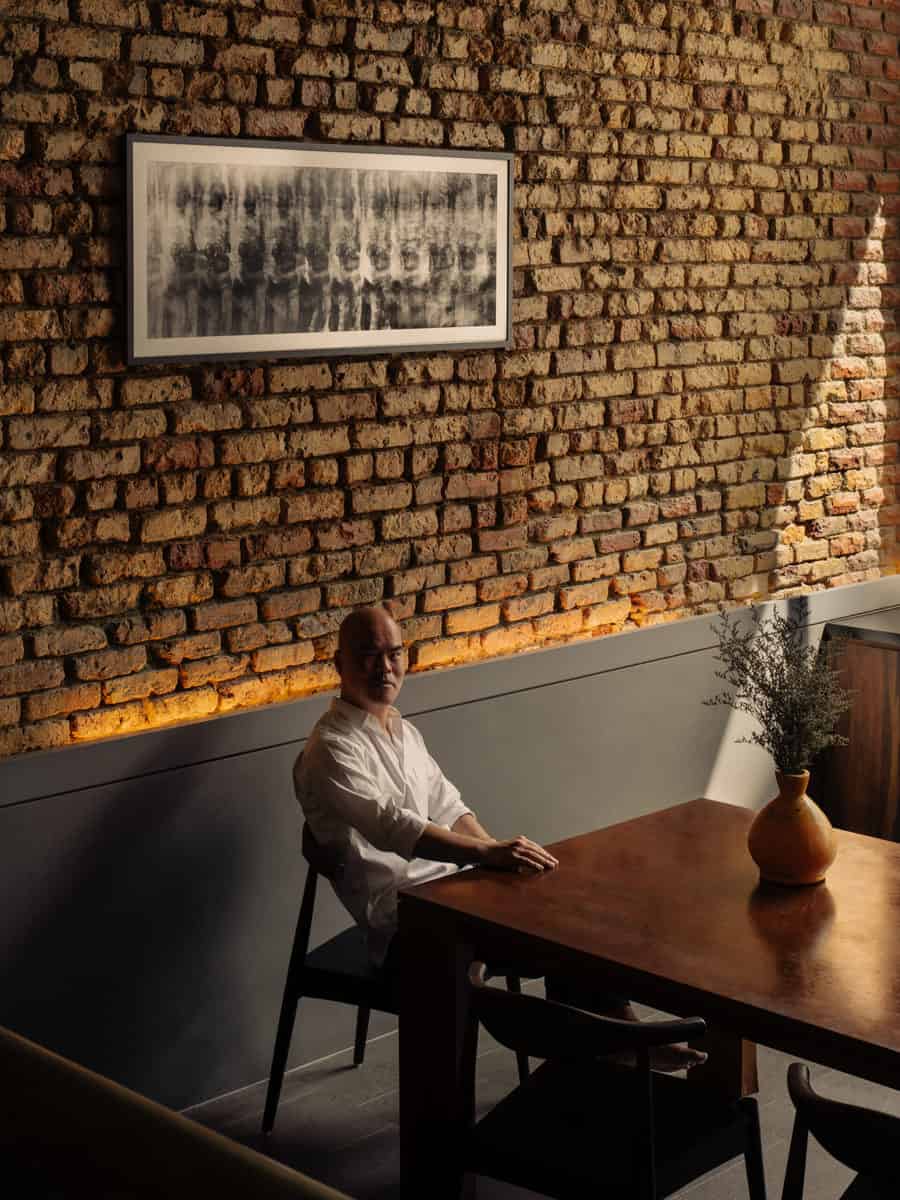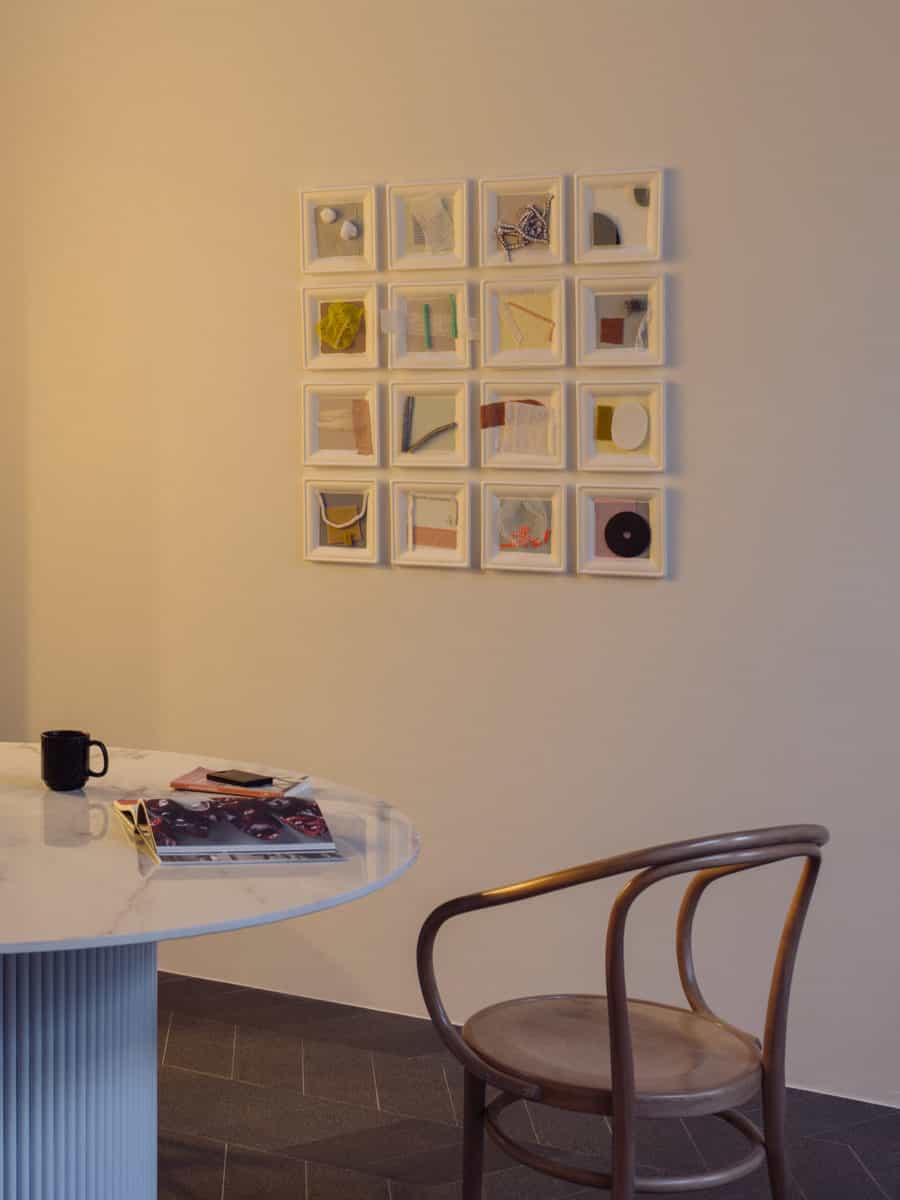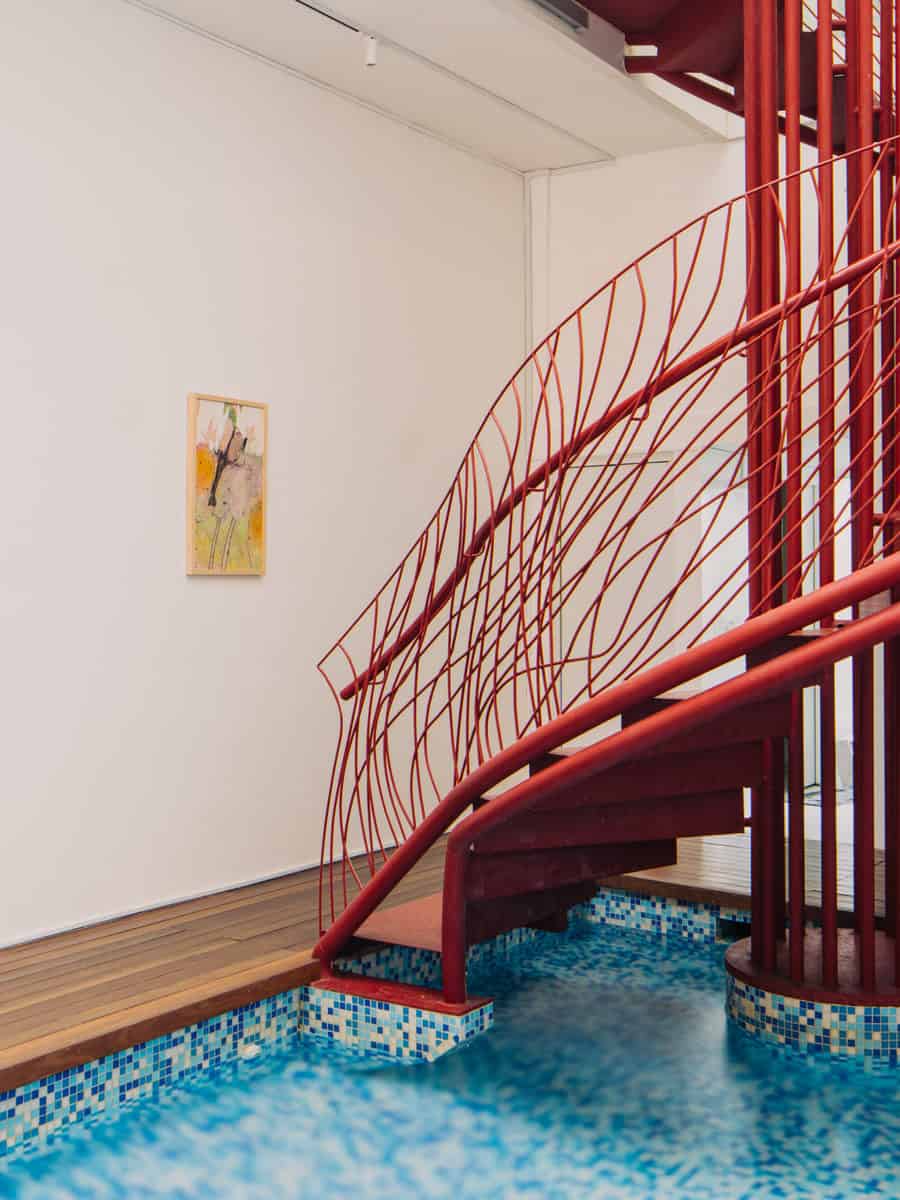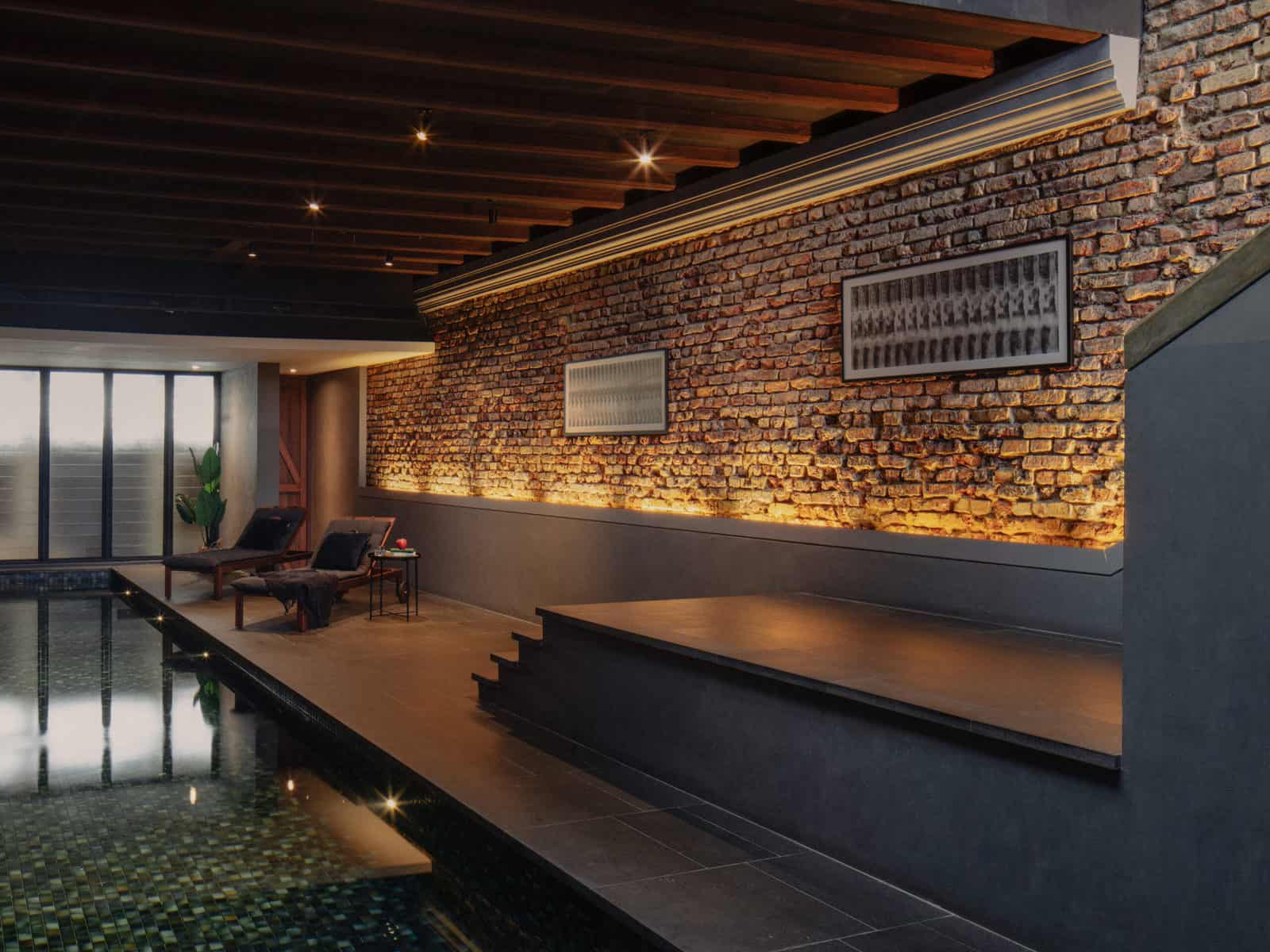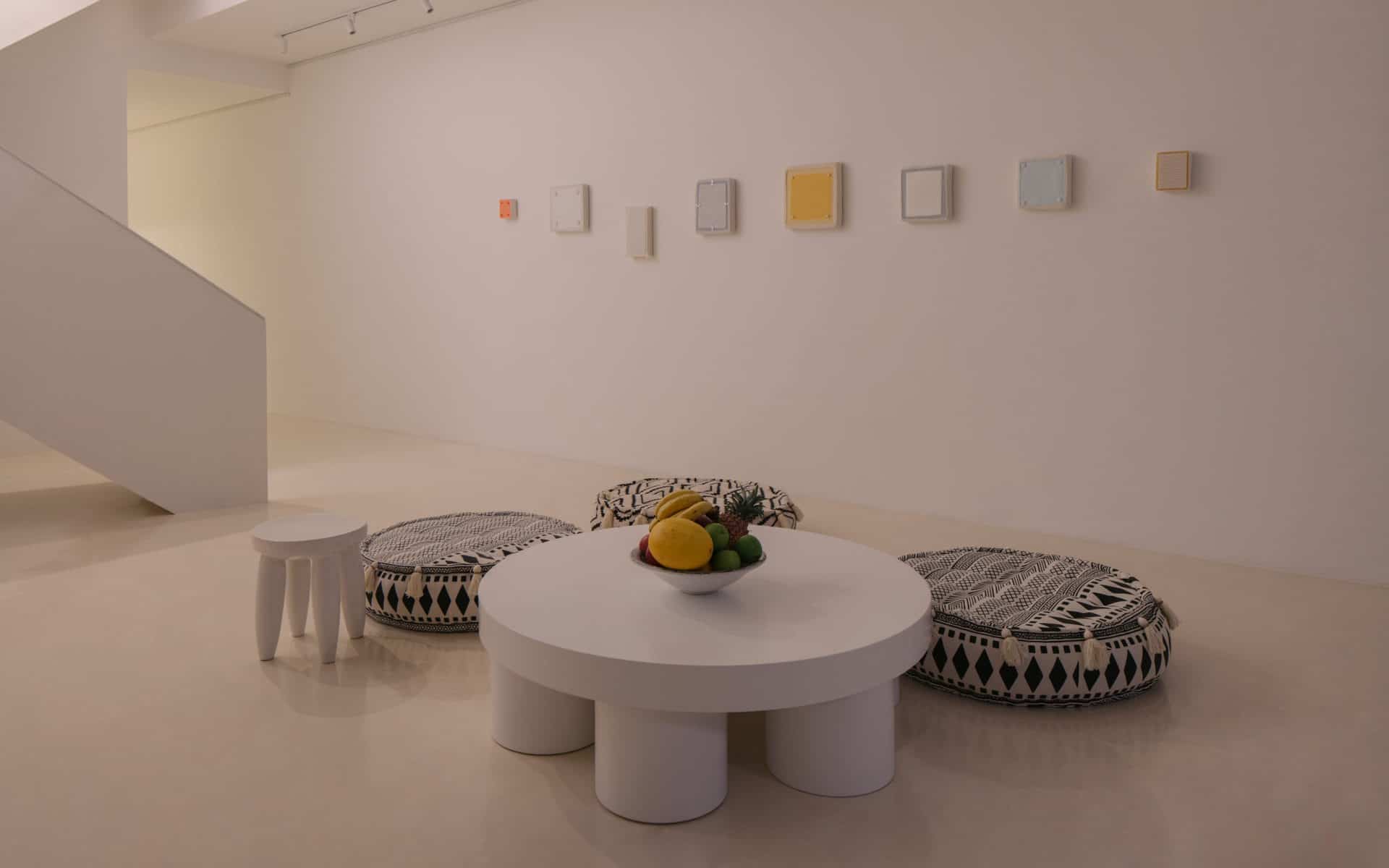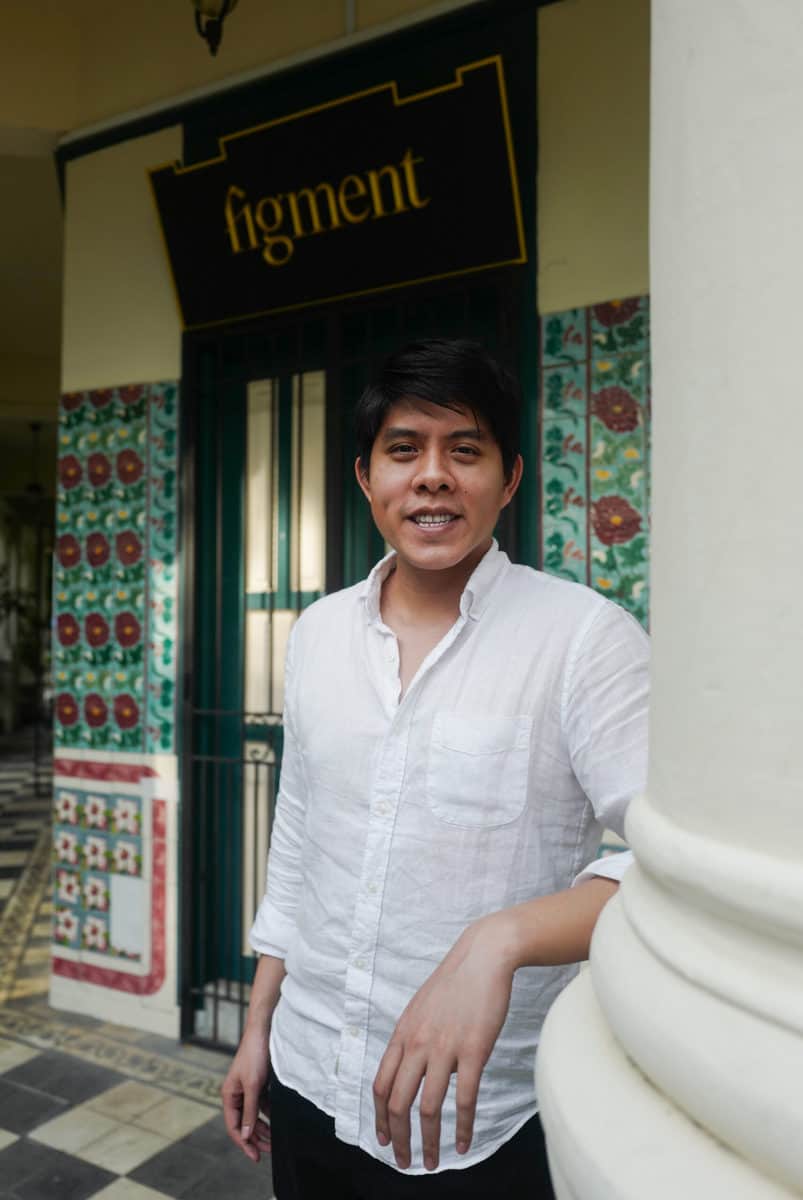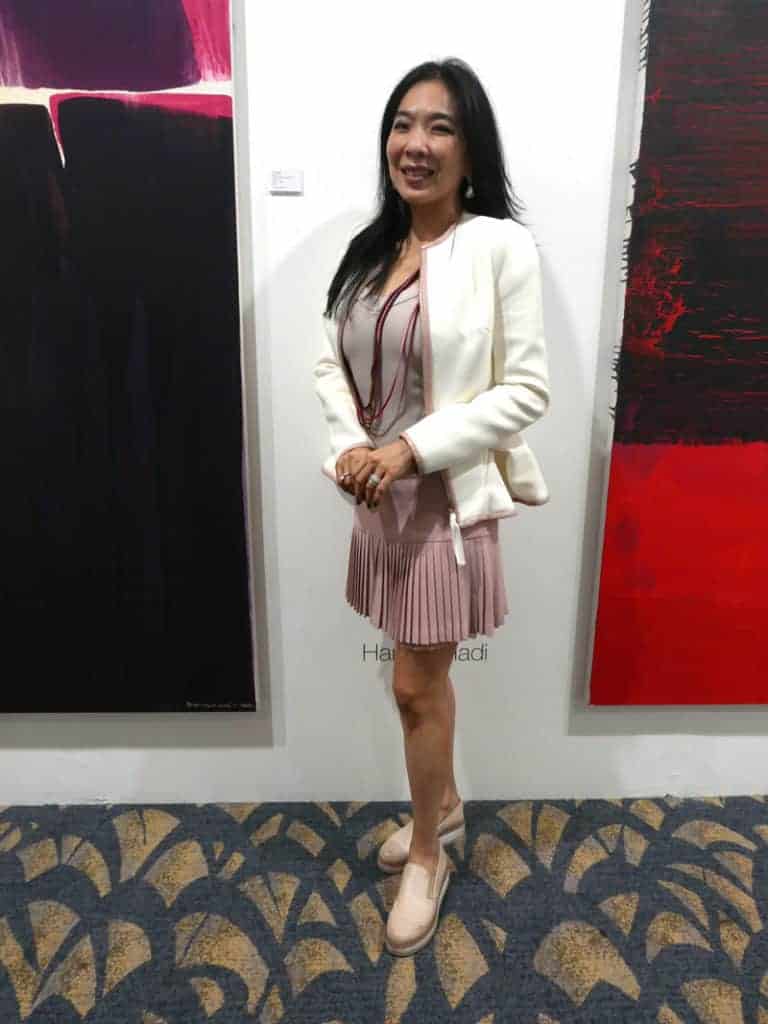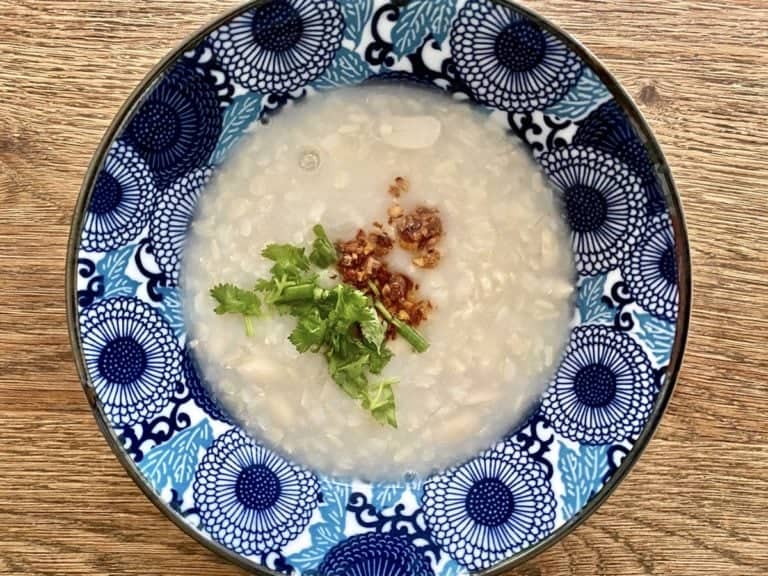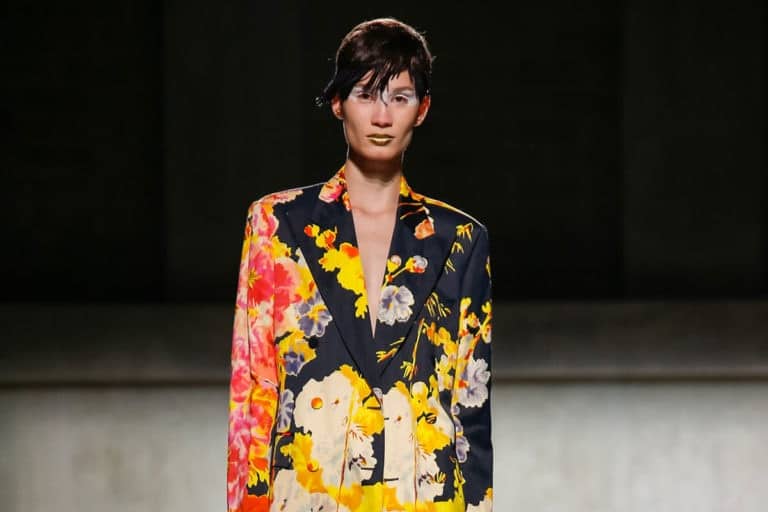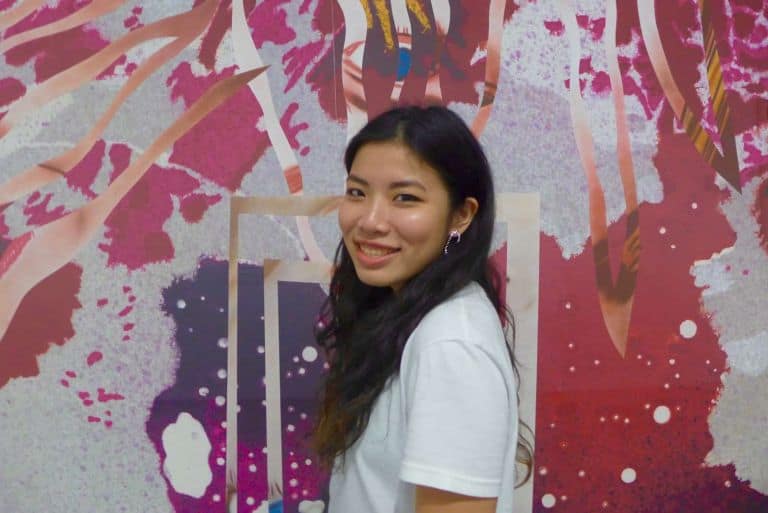While art spaces are usually divided into ‘white cube galleries,’ ‘institutions’ or ‘independent spaces,’ Singapore real estate group Figment functions beyond these categories as it has its own unique take on building art appreciation and supporting local artists.
Figment rents out a selection of luxury co-living shophouses in neighbourhoods like Orchard, River Valley, Jalan Besar and Geylang, just to name a few. Local architects have spruced up these heritage shophouses’ interiors to give each of them a modern, distinct character.
In Figment’s Geylang Case Study homes, works of young Singapore artists are on display and complement each house’s design theme. We checked out these properties a few weeks back with Figment Founder Fang Low and viewed works by Yen Phang, Leow Wei Li, and Nature Shankar.
Displaying art in breathtaking spaces
Unsurprisingly, the interiors are breathtaking and it’s clear that thought has been put into matching the artworks with each house’s theme.
On this process, Fang shares that Figment worked with local curators, such as Wu Chin Ying, to build an initial artist roster, before shortlisting them for specific homes and ensuring “synergy” in each one. “We saw the selection process as merging various aspects of a narrative to build a coherent story,” Fang explains.
Alexandra House is home to Yen Phang’s series Still. Here., which depicts vertebrae in Chinese ink on rice paper. There’s a neat parallel between how vertebrae function as the backbone of our bodies and how the works hang on an exposed brick wall, which similarly makes up the building blocks of the house.
Over in Gallery House, Leow’s textured works lend the bright, minimalist space touches of eye-catching texture. Incorporating everyday objects and materials like cotton facial pads and laundry nets, Leow’s works also enhance the cosiness and intimacy of spaces like the living room and kitchen.
“I’ve always dreamt for my artworks to be placed in homes or more specifically, in people’s private and intimate spaces where they live their everyday lives,” Leow shares.
On how having her work displayed in homes offers a more contemplative experience than traditional exhibition spaces, she expounds, “being able to revisit works in our own time is great because there is so much more to what we can see at any given point in time.”
Upon entering Red Dragon House, the first thing that caught our eye was Nature Shankar’s Nothing Good Happens after 2am.
The house gets its name from a crimson-coloured, indoor spiral staircase, which makes for a majestic centrepiece. Dragons and the colour red are ever-present in Chinese culture for their associations with auspiciousness — paralleling Shankar’s explorations of her Chinese-Indian heritage.
What we liked about the Case Study format was how fitting the placements of specific artworks felt in the interiors. It was also refreshing to see such evocative artworks shown against fantastic backdrops of brick walls, winding staircases, and stylish lounges.
The tour offered us a sneak peek into living in these fabulous properties. We imagine that constantly being surrounded by such thought-provoking works of art gives people a lot of time to ruminate over them.
An alternative art business model
While Figment’s display of artwork in homes isn’t revolutionary — property group Ascott launched its #lyfxart programme at co-living space lyf one-north Singapore in early 2022 to showcase works by local artists and OH! Open house has been holding art tours in people’s houses for years now — we’re intrigued by how the company supports artists beyond just exhibiting their works.
What stands out to us is how each artist receives 10% of rental profits for 5 years (give or take) from the home that their works are displayed in. This means that each artist receives a steady stream of income for as long as their work is on show at the property or until the work is sold; something that’s crucial for sustaining young artists at the start of their careers.
Artists are also given deposits to cover the production of their works — regardless of whether such works are brand new, or already made.
Figment doesn’t take a commission from the sale if the works are sold at the price the company has purchased them for. If the work hasn’t sold after five years, then Figment acquires it — meaning that Figment pays for the artwork over time at the price agreed on at the start of the arrangement. The final sale price is netted off against the share of rental profits previously paid to the artists and if applicable, any previous deposits made.
Sceptics may view this as questionable: locking in the price of a young artist’s work at a certain point in their career, only to pay that price over a few years without having to account for a potential increase in value. On the other hand, pragmatists might see this as a way to ensure a sale at the end of the five-year arrangement, as well as ensure that artists receive a steady stream of income in the interim period.
No matter which camp you’re in, there’s no doubt that this differs from, and arguably seeks to improve on the typical gallery format. In most traditional gallery relationships, artists are only paid for their works when they are sold.
Fang sees the arrangement as a “win-win from the artists’ perspective” as Figment provides them not only with a beautiful space to share their work with new audiences, but also the “assurance of a regular payment rather than consigning their works with no guarantee.”
On how Figment fits within Singapore’s existing landscapes of galleries and institutions, Fang shares, “I believe it is essential to have more independent private players in the scene.”
“Diversifying the space beyond a few powerful figures can make the art scene much more vibrant with a range of views expressed in conversation, not to mention sustainable if or when government funding does fall away,” he explains.
From an artist’s perspective, Yen Phang observes that the company’s model is “not merely a different mode of exhibition, but also based on a willingness to experiment with models of patronage.”
“It’s encouraging to see Figment really consider how to support creative relationships beyond the immediate acquisition or direct commissioning (of works),” he concludes.
How young artists benefit
For some artists, partnering with Figment has offered new opportunities to work with unique business and exhibition models. “It has encouraged and made me more hopeful about how collaborations with businesses can happen,” Leow says.
“I view Figment as a testing ground and an extension of my studio, which allows me to experiment with the presentation of my work and get feedback,” she adds.
Touching on how displaying his works in co-living spaces enriches the presentation of his works, Yen Phang comments, “Currently, what I’m looking for in my practice is a greater intimacy in encounter. In this instance, working with Figment afforded that.”
Yen Phang shares that situating his works in Alexandra House allowed for his works to be “contextualised within a dynamic set of household rhythms,” instead of more typical exhibition spaces that don’t usually add further context to the works.
“Working with Figment allowed me to embed my creative preoccupations with biological abstractions within an everyday lived experience,” he concludes.
Building art appreciation in Singapore
As for how Figment fosters favourable conditions for artists and builds Singapore’s art scene, Fang explains, “Figment and our Case Study Programme provides resources, be it space or financial support, to encourage increased art production while cultivating an emerging collector scene from the Figment community.”
In his view, he states that “by welcoming artists and their works into a Figment home, we make fine art much more approachable, relative to the ‘white cube’ gallery or museum space.”
During Singapore Art Week 2022, artists were also invited to have meals with the tenants and share more about their practice. He hopes that by allowing tenants to learn about the works firsthand and live alongside them, they will be encouraged to purchase the works and become art collectors.
It’s a logical sentiment, but we still wonder about the long-term effects of this model. Seeing that 80% of tenants are expatriates, what happens when the art-collecting tenants return to their home countries?
Of course, they would have a new appreciation for Singaporean contemporary art. But the question remains as to how successful Figment will be in fostering art appreciation in local audiences or developing a local collector base.
All in all, Figment is an intriguing art business-slash-real estate model that seems to be making strides in supporting local artists. And despite the Case Study homes’ exclusive appearance, the artworks remain accessible as the public can simply drop Figment an email to arrange an art-viewing tour with in-house curator Jen Quinn Choo.
At the end of the day, we’re always happy to see new models that benefit artists in the local ecosystem. Only time will tell if Figment makes as significant an impact as it seeks out to.
____________________________________
Figment ‘Case Study’ homes are located in Geylang, Singapore.
Arrange an art-viewing tour with Curator Jen Quinn Choo by emailing hello@figment.live.
An earlier version of this article contained references to artist Khairullah Rahim and Seet Yun Teng as being part of this project. The references have since been removed.
